Visit the Canadian Rockies, spanning Canada‘s British Columbia and Alberta provinces, and you won’t be disappointed. You’ll be surrounded by snowy mountain peaks, rivers, vivid blue lakes, pine forests, laid-back alpine towns, vast icefields and abundant wildlife. Despite the devastating wildfires in Jasper, the area is recovering and Banff National Park is set to welcome a near-record number of visitors this year. Here is the best backpacking Banff and Jasper itinerary for 7 days, including where to stay and what to do.
This post may contain affiliate links. That means, if you make a purchase, I may receive a small commission. As an Amazon Associate I earn from qualifying purchases. For more information, read my disclaimer.
Planning your itinerary for Backpacking Banff and Jasper
Banff and Jasper are dream destinations for backpackers seeking epic adventures, jaw-dropping landscapes and unforgettable experiences. These world famous national parks are UNESCO World Heritage Sites for a reason.
Whether you’re hiking rugged trails, camping under starlit skies, or soaking in natural hot springs, planning your backpacking itinerary for Banff and Jasper ensures you make the most of your time in this alpine paradise.
This guide will help you map out your adventure, highlighting must-see spots, budget-friendly tips, and insider advice to make your journey through these stunning parks as memorable as possible.
Let’s hit the trails!
Days 1-2: Chill out in Banff, Alberta
Banff is a popular resort town located 1,500 metres high in Alberta’s Banff National Park in the Canadian Rockies.
One of Canada’s best-loved tourist destinations, it’s famous for hot springs and cool mountain sports, including hiking, biking and skiing. If you’re not feeling active, it’s a pleasant place to relax and browse the shops and restaurants, as you plan your itinerary for Banff and Jasper.
Planning a backpacking trip across Canada? Check out my ultimate guide here.
Where to stay in Banff on a backpacker’s budget
Banff may be known for its luxurious resorts, but there are budget-friendly options for backpackers looking to explore the Canadian Rockies without breaking the bank.
The best hostel in Banff is the HI Banff Alpine Centre. It’s located in a scenic location on Tunnel Mountain, a short bus ride or 25-minute walk from downtown Banff. This hostel provides a cozy and affordable base for exploring the Rockies. It features dorms, private rooms, cabins and an on-site restaurant. Stay here and you’ll get a free local bus pass too.
If you’re traveling during the warmer months, camping is an excellent way to save money while immersing yourself in nature. Banff National Park has several well-maintained campgrounds, giving you stunning views and direct access to trails. Popular spots include the Tunnel Mountain Campground and Two Jack Lakeside Campground.
Avoid high Banff hotel prices by booking budget accommodation in advance here or explore the map below.
Fly high on the Banff Gondola
One of the best things to do in Banff is the Banff Gondola. This carries you 700 metres to the top of Sulphur Mountain. From the summit you can see outstanding views along the Bow Valley and across six mountain ranges.
There are plenty of fun activities at the top. These include interactive exhibits, a 360-degree observation deck and the historic Cosmic Ray Station. Stroll along the Sulphur Mountain Boardwalk and you can spot the cute creatures who live up here.
Buy your Banff Gondola tickets in advance here.
Day 3: Travel along the stunning Icefields Parkway
When travelling between Banff and Jasper on your itinerary, you will most likely travel along the Icefields Parkway.
This is an epic road that stretches the 140 miles (230 km) between these national parks. There are many beautiful stops along the way that you shouldn’t miss.
If you don’t have a car or camper van, tour operators such as Sun Dog Tours can transport you between the national parks. You will benefit from a friendly driver to give you local insights when you stop at all the picturesque Icefields Parkway attractions on the way.
At 8.30am our tour guide Kevin arrived with the bus to pick us up from our hotel in downtown Banff. The Sun Dog bus holds around 20 people, but we were lucky enough to have it to ourselves. Kevin has been a tour guide in this area for almost 30 years. His enthusiasm for the place shone through, as he told us how the Banff townsfolk have created special bridges so the wildlife can safely pass over the roads.
Book your tour of the majestic Icefields Parkway from Banff here.
Lake Louise
The first stop is the famous Lake Louise, a 40 minute drive north west of Banff town. At 9am, crowds of tourists were already there, admiring and photographing the view. It was cloudy when we arrived. On a sunny day the bright blue hue of the lake must be even more breathtaking. The nearby hotel lodges have a Swiss Alpine feel about them, inspired by the first European explorers to settle here in the Rocky Mountains.
Book your tour of the lovely Lake Louise from Banff here.
Bow Lake
The next stop on Continuing our Icefields Parkway tour is Bow Lake, 30 minutes north of Lake Louise. It is also bright blue, as it’s fed by the nearby Bow Glacier. As the glacier moves, it grinds the rocks beneath into silt. As the silt sits suspended in the lake’s water, the sunlight reflects the particles as a spectacular turquoise colour. To add to the lake’s beauty, we even saw a rainbow arching across the mountainside into the water.
Peyto Lake
Just four minutes’ drive away is Peyto Lake, just to the west of the Icefields Parkway. Viewed from high up on the Bow Summit, it’s another stunning sight.
Book your tour to see Bow Lake and Peyto Lake from Banff here.
Waterfowl Lakes
Another 12 minutes north along the highway takes you to the Waterfowl Lakes, offering an eerily beautiful view across the mist-shrouded mountains.
See the famous Waterfowl Lakes viewpoint on this tour.
Lunch at Columbia Icefield Glacier Discovery Centre
Settle in for an hour’s journey, as the next stop along the Icefields Parkway on your Banff to Jasper itinerary will be for lunch.
The Columbia Icefield Glacier Discovery Centre overlooks the Athabasca Glacier, part of the vast Columbia Icefield. There are special bus tours available here so you can walk across the ancient moving ice. Covering six square kilometres, it is up to 300 metres thick – almost as thick as the Eiffel Tower is tall. The centre itself has a comfortable canteen offering tasty and affordable hot and cold food.
Venture onto the Glacier Skywalk
Our adventure for the day was the Glacier Skywalk, six minutes north of our lunch stop.
It opened in 2014, receiving international media coverage. A cliff-edge walkway leads to a semi-circular glass-floored platform, jutting out over a 280 metre drop to the rocks below. If you suffer from vertigo you might be nervous, but it actually feels very safe on the platform. It provides astounding views of the Rocky Mountains. You almost feel that you can reach out and touch the scenery. A narrative audio guide details the area’s natural features and wildlife, plus how the project was designed to respect them. It was awe-inspiring being out on the ledge and feeling so close to these famous mountains.
Enjoy an adventure at the Columbia Icefield Discovery Center, including the Skywalk, on this guided tour.
Tangle Falls
The afternoon leg of the Icefield Parkway drive is all about waterfalls. Just a minute away from the Glacier Skywalk are the beautiful Tangle Falls. You can walk up the rocks to look out from its various stages, as the water splashes by past the pine trees.
Sunwapta Falls
Just over half an hour north are the Sunwapta Falls. Here, fallen logs cross the crevice as the water cascades beneath.
If you’re driving to Jasper, check out this audio tour of the sights, including Sunwapta Falls.
Athabasca Falls
Finally, the most powerful waterfalls are the Athabasca Falls. Fed by the huge Athabasca glacier, they lie 20 minutes north west on your Icefields Parkway trip from Banff to Jasper national park. At these falls, you can see how the intense force of the water has shaped the rocks, wearing them away over the years. The final destination, just 25 minutes’ drive away is the town of Jasper.
Why not stop at Athabasca Falls and enjoy a whitewater rafting adventure.
Days 4-7: Explore Jasper National Park
In 2024, the Visitor Information Centre in Jasper, Alberta celebrated its 110th anniversary. This landmark rustic building sits in the heart of this laid-back alpine town. It’s your first stop for advice on the best trails for getting around Jasper National Park during your 7-day itinerary in Banff and Jasper.
Where to stay in Jasper
Hostels
Jasper has several budget-friendly accommodation options, ideal for backpackers. Please note, some places are temporarily closed as the area recovers from the wildfires.
A top place to stay that’s open at the time of updating this article is the Jasper Downtown Hostel. It’s located in the heart of Jasper, with easy access to shops, restaurants and transportation. You can choose from a dormitory or a private room. There’s also a kitchen, common lounge area, free Wi-Fi and laundry room.
Homestays
Before the 2024 wildfires, there were many lovely homestays in Jasper village. The residents open up their spare rooms to visitors for a fee. You could find availability on a noticeboard in the Visitor Information Centre.
Here are two homestays currently available to book at the time of updating this article:
The fabulous Fitzhugh House Guest Accommodation is a a cosy, centrally-located stay with excellent amenities. It’s an ideal base for exploring while being close to Jasper’s attractions and restaurants.
Alternatively, the top-rated White Brick Inn is a charming bed and breakfast in central Jasper with welcoming hosts and a private terrace for a peaceful retreat.
Our homestay experience
We stayed in a stylish, airy and modern house built by Aldo, a friendly retired Italian man, and his Canadian artist wife Shirley. When they’re not welcoming guests, the couple spends several months a year in Palm Springs, travelling around the world visiting family and embarking on European cruises. It seemed to us like they have the perfect retired travelling lifestyle.
Pitch a tent and go camping
Portions of Jasper National Park remain closed or affected due to impacts from the Jasper Wildfire. The Whistlers campground (where we stayed) and Miette campground will be fully open for the 2025 summer season, while the Wapiti campground will operate at reduced capacity. Please check for up to date information.
Judging by the traffic coming in and out of Jasper’s Whistlers campground, many people travel around Canada in a huge RV, or recreational vehicle. Some of these vehicles are enormous, like full mobile homes.
Alternatively you could bring your own tent and camping equipment. We hired ours from Bactrax Banff Camping Rentals. Here you can choose from a backpacking or car camping package or do as we did and hire the individual items you need. For us, it was a three-person tent (so we could fit in our large backpacks as well as ourselves), two inflatable therma pads to sleep on, a camping stove with gas, and a plastic plates and crockery set.
The tent, while not one of those pop-up tents (which we couldn’t find in Canada, despite it being an outdoorsy nation), was easy to assemble and had just the right amount of space for us and our bags. We were also impressed with the compact camping stove which was super powerful, cooking our supper in just a few minutes.
Our camping experience
It was a lovely, warm and sunny day as we pitched the tent in our walk-in spot in the campground, a short walk from the food lockers (to protect your fare from hungry bears) and a well-maintained toilet block.
There were birds chirping in the trees and squirrels passing by, hopeful for some morsels of bread. After dinner on the first night, we hung up our hammocks – souvenirs from Malaysia – between the trees and chatted until the sun went down, enjoying the peaceful, natural environment and the comforting aroma of the pine trees.
One thing to be aware of, however, is no matter how warm the day, it can get very cold indeed during the night – near freezing – so make sure you have a warm sleeping bag and layers of clothing to wear.
Grab a map and take a hike
Pick up a map and you will notice Jasper is aptly shaped like the letter ‘J’.
Once you strap on your hiking boots and make your way into the wilderness, within minutes you will be surrounded by spectacular scenery and feeling a million miles away from hectic urban life.
We chose the Mina Loop Trail, recommended to us as a relatively short and unchallenging route for backpacking in Jasper National Park. It’s just to the north of the village, past mountain vistas and serene lakes.
Join a Jasper wildlife and waterfalls tour including a lakeshore hike – book it here.
Our first stop was Cabin Lake, which reflected the clouds in the sky like a perfect mirror.
The Upper and Lower Mina Lakes were perfectly peaceful and enveloped by total, blissful silence. This is so hard to find these days, it felt completely fresh. Hardly a soul was around, except for the occasional couple cycling past on their bikes.
Get on your bike
Cycling is an ideal way for getting around Jasper without a car, so it was an easy decision to hire bikes. Please note, as of summer 2024, some bike rental shops are closed as the area recovers from the wildfires.
The park’s trails vary from pristine roads to forest tracks criss-crossed with tree roots. We headed for the Red Squirrel Run Trail and Athabasca River Loop to the south of the village. We needed to cross the Canadian National Railway line – no easy feat when you have freight trains passing that are literally a mile long. Then we rode by Mildred Lake, the Trefoil Lakes and Annette Lake, enjoying the late afternoon sunshine.
We were over the moon to see a group of wild elk grazing near a horse riding centre, headed up by this impressively antlered male.
The following day we were keen to get out on the bikes again, so we headed up north to Pyramid Lake. This calm oasis lays next to the Pyramid Mountain, so named because of its triangular peak.
If you prefer to join a group, why not book a Jasper National Park guided e-bike tour which includes a meal.
Saddle up on a horse
Don your cowboy hat and boots for a true western experience, as Jasper Riding Stables takes you for an adventure on horseback. This is a wonderful way to explore Jasper National Park.
Our horseriding tour guide was supposed to have retired a few years ago, but loves the horses and the park so much that he continues to lead tours. Informative and engaging from the start, he told us all about the park’s flora and fauna, and how they are being affected on a ground level by changes to global conditions. He gave us insight into the local culture and even tips for travelling in Mexico and Hawaii – two of my dream travel destinations.
The scenery was really something to behold. Silver birch trees lined our forest route, as birds of prey circled overhead.
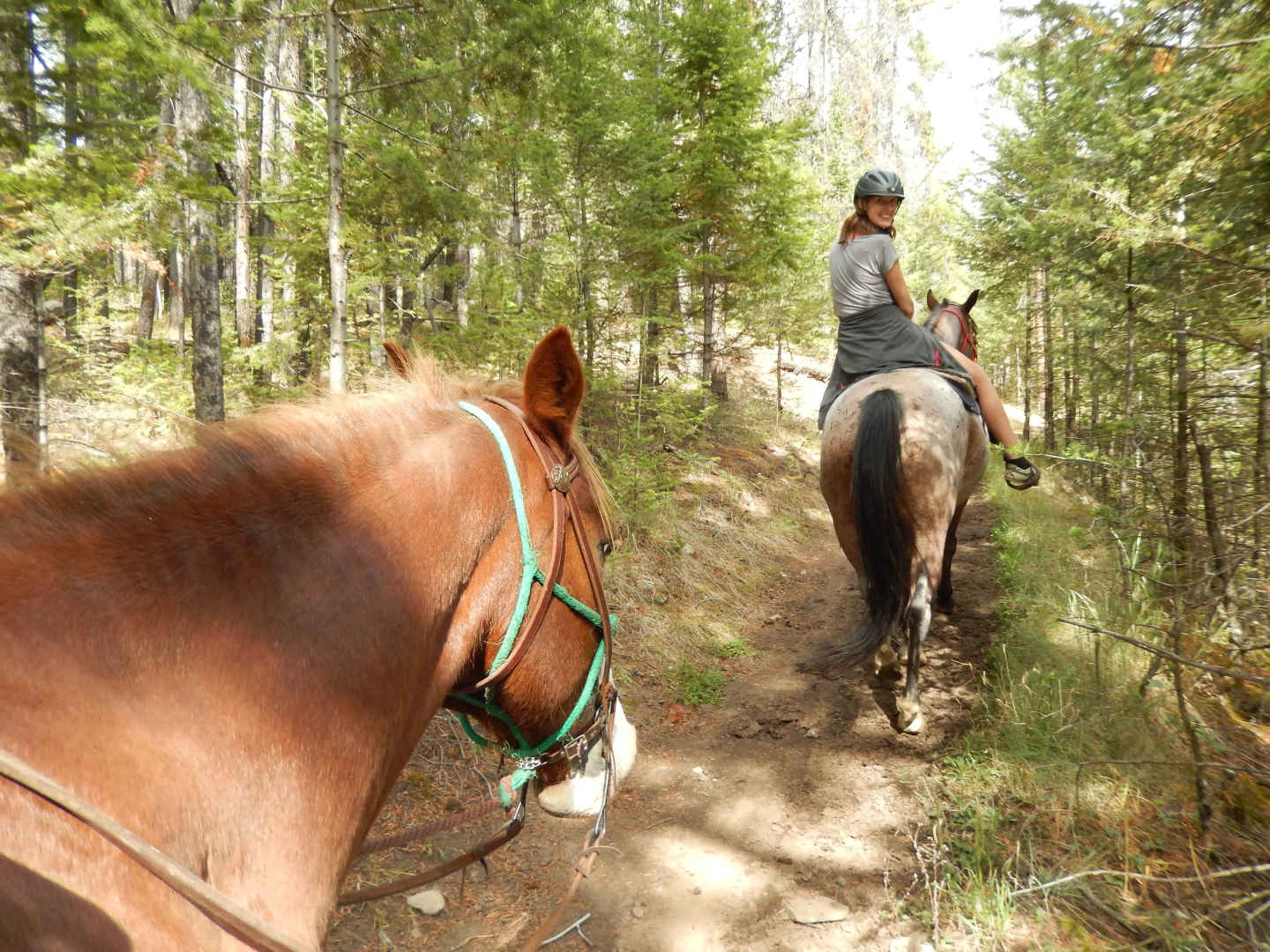
From high up here near the Pyramid Lake, we could see for miles across the pine trees, rivers and lakes to the mountains looming on the other side.
This was one of my favourite experiences in Jasper. It was so calming to ride on horseback through such a beautiful natural setting and I felt very connected with the surroundings. Even though I have little experience of riding, my horse was well-behaved, only stopping occasionally to try and nibble at some of the foliage. This is a highly recommended experience in Jasper.
Take an organised tour
If you are in Jasper without a car and you’re keen to see bears and other creatures roaming in the wild, you may want to sign up for an organised tour. We chose SunDog’s Discover Jasper and its Wildlife Tour. Leaving every afternoon, a minibus will drive you around to explore Jasper National Park and the animals wandering around as the sun sets.
Our tour experience
It was our driver’s first time leading this tour. Unfortunately, we didn’t see anything for around an hour and a half, except for one small female elk. We were assured that this is unusual. So we sat back and enjoyed the scenery and the driver’s commentary. Eventually, on one of the side roads we encountered a large male elk making his way through the forest.
Book a space on a popular wildlife watching tour in Jasper National Park here.
Then the driver produced this heavy antler to pose with. How an elk can carry two of these around on its head all day, I don’t know.
Later on in the trip we saw Bambi-like deer bobbing nervously through the woods. Also some more female elk grazing by the side of the highway heading back into Jasper village.
Head into the clouds on the Jasper SkyTram
On our first day, when we were walking through Jasper village, we spotted something sticking up, high on the mountaintop, and wondered whether it was a cluster of tall trees or a hermit’s castle (yes, our imaginations were on overdrive that day). As it turned out, it was the Upper Station of the Jasper SkyTram, which celebrated its 60th anniversary in 2024.
This was our last day to explore Jasper National Park, and a scorcher of a day, so we checked it out, taking the seven minute ‘flight’ 2300 metres up Whistlers Mountain, as the attendant gave us a commentary of what we were seeing.
At the top, we took the boardwalks and hiking trails up a further 200 metres to the summit, enjoying spectacular 360 degree views over Jasper National Park.
Signs revealed that this rugged mountaintop landscape makes up around 40% of the park. Not much can live up here, so it was a privilege to experience this area from a bird’s eye view.
I couldn’t help but feel philosophical up here, feeling at once like a small speck in the world and elevated – physically and emotionally – among these majestic, calm mountains.
From high up here we could see for ourselves Jasper village way below with its distinctive ‘J’ shape. An exhilarating way to conclude our 7-day itinerary in Banff and Jasper. It really is a naturally, soulfully picturesque part of the world.
Reflections on a 7 day itinerary backpacking Banff and Jasper
In just seven days, this Canadian Rockies itinerary taking in Banff, Jasper and everything in between is sure to leave you with a sense of wonder about the world.
It really is the most incredible way to spend a week and discover the natural beauty of Canada.
Planning a trip to the nearby city of Calgary, Alberta? Discover its tower and other attractions here.
This post was brought to you with thanks to Jasper Riding Stables, BacTrax Camping Rentals and Jasper SkyTram.
Next up, discover the ultimate guide to planning a Canada backpacking trip across the country.


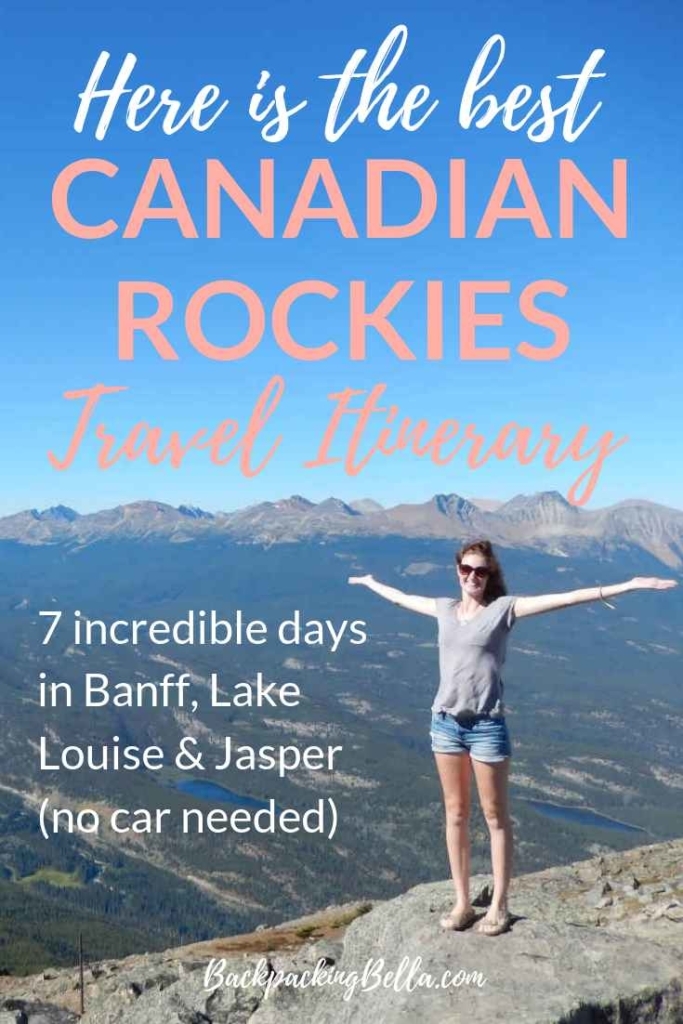
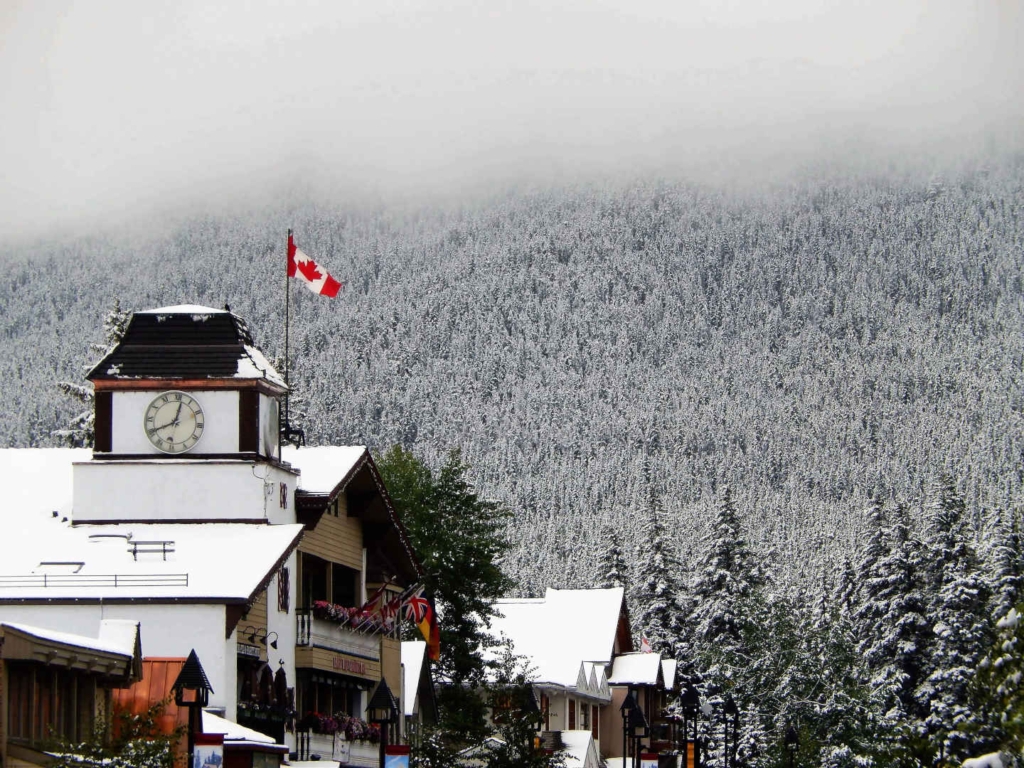
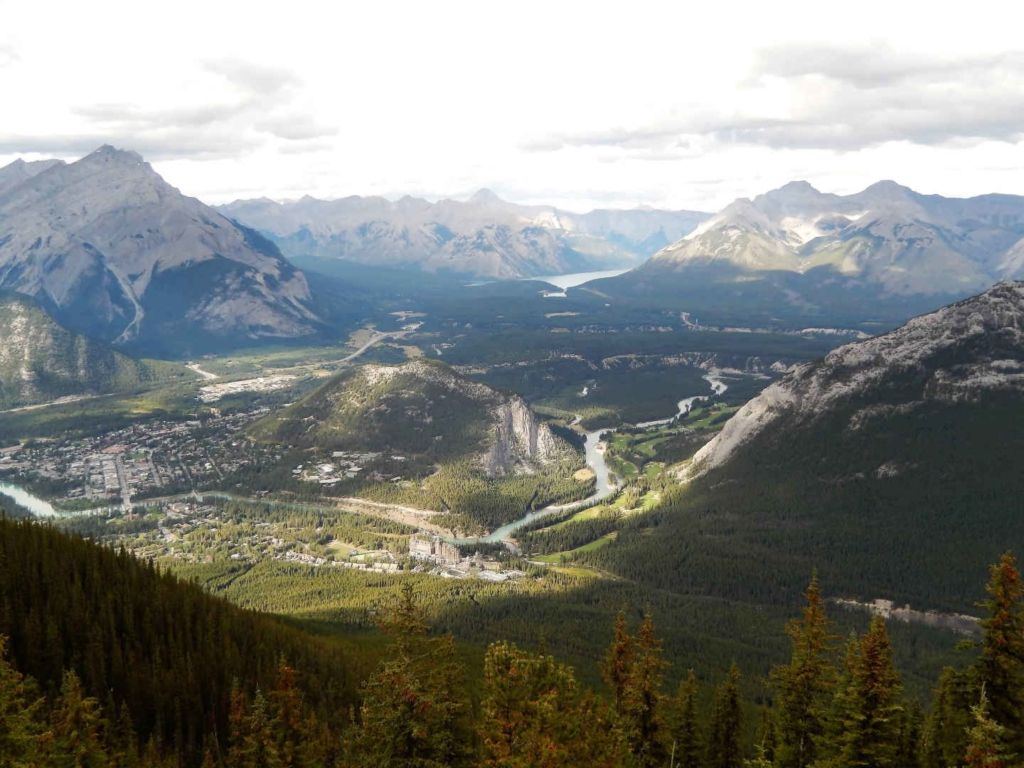
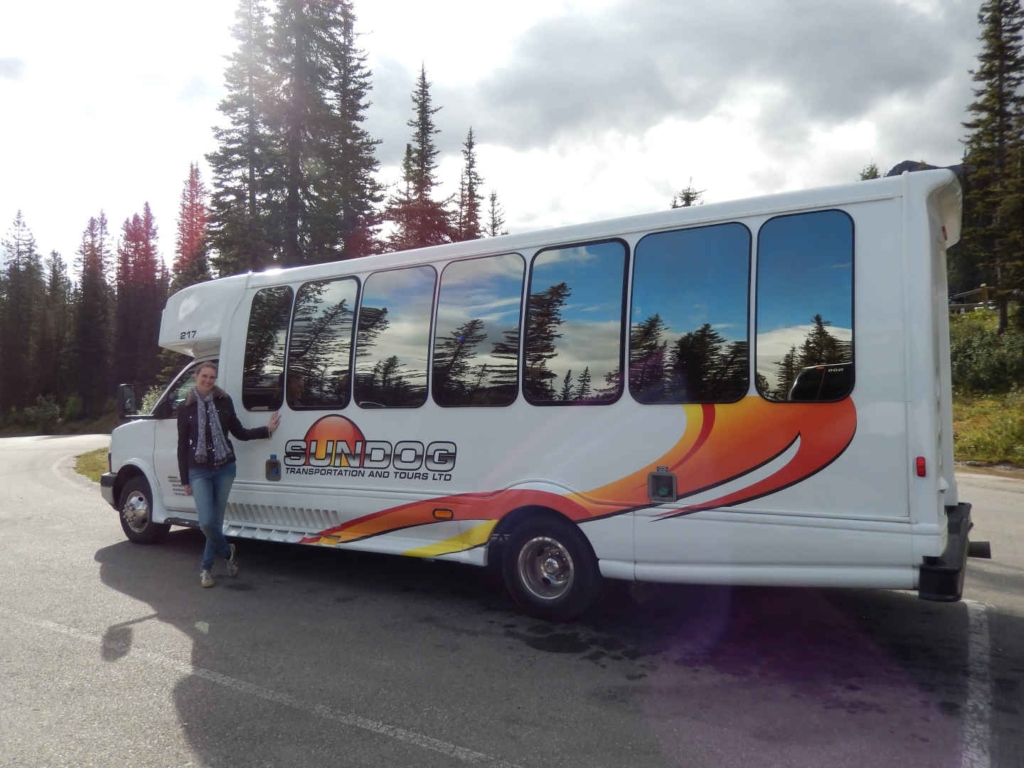
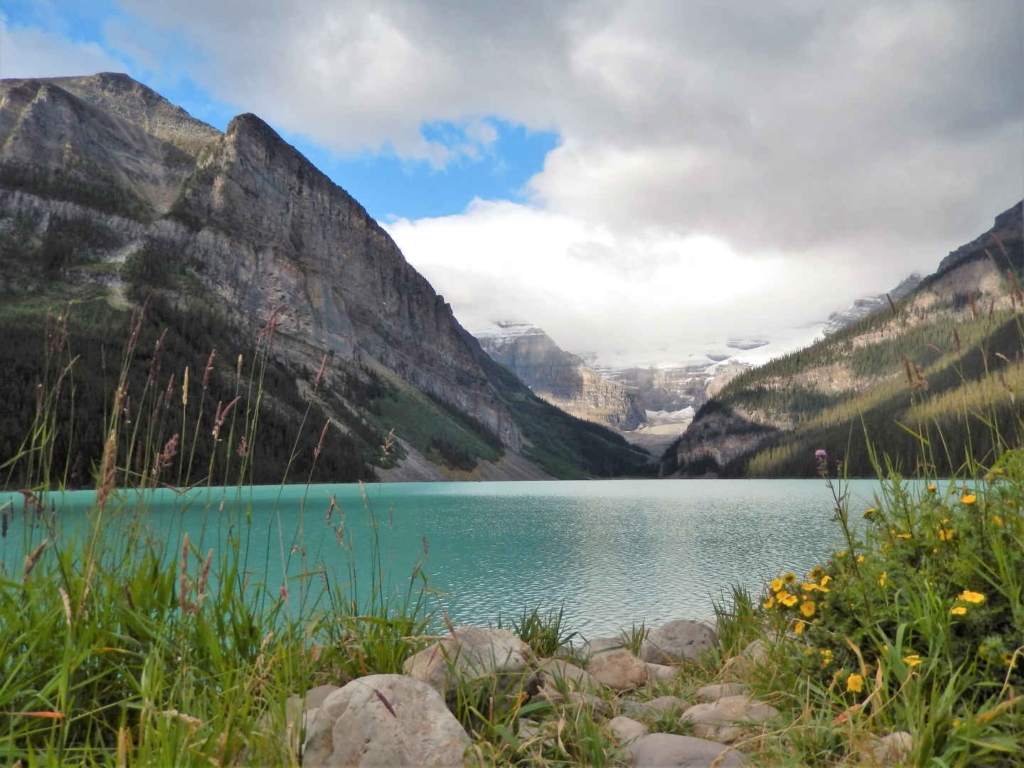
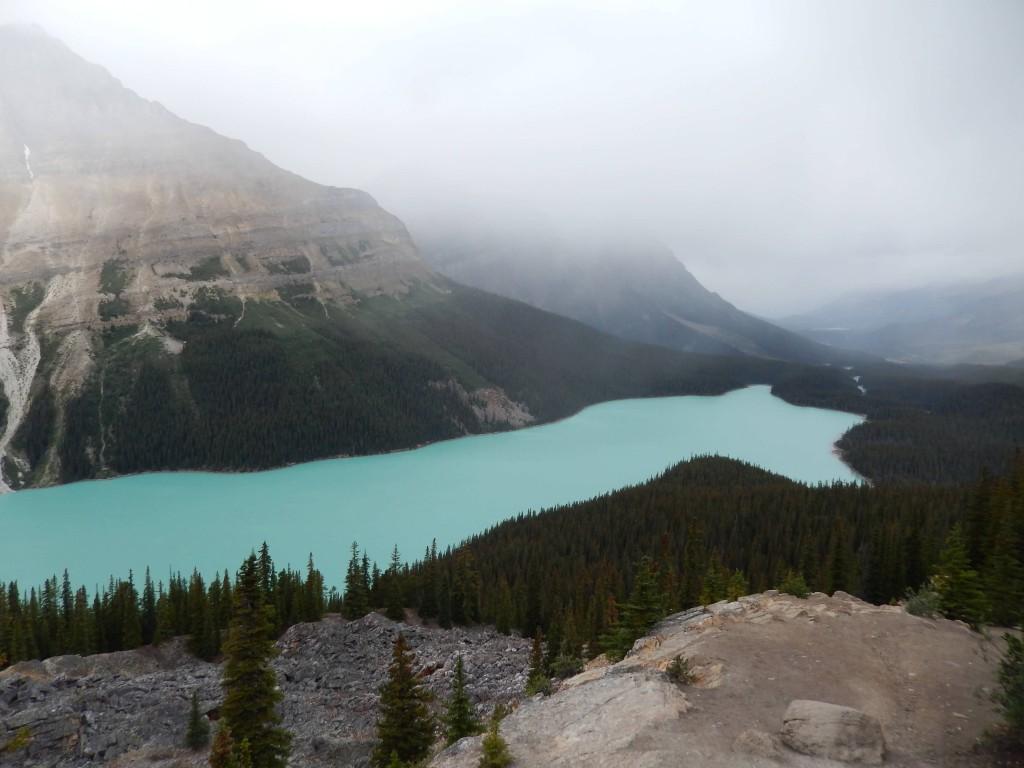
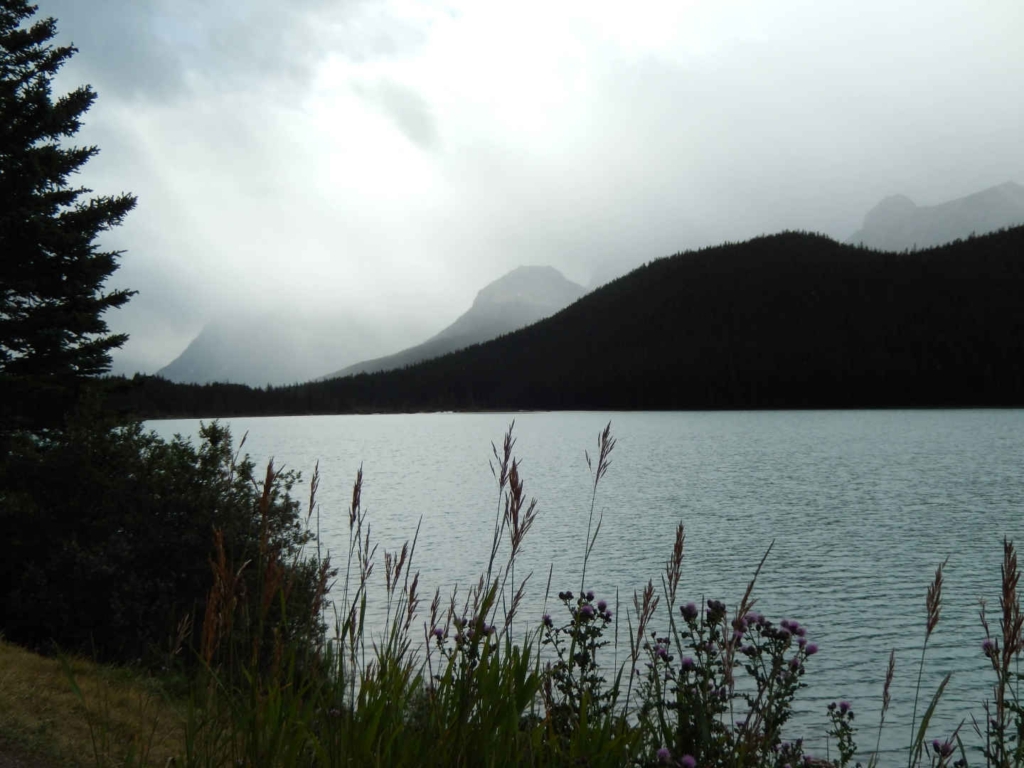
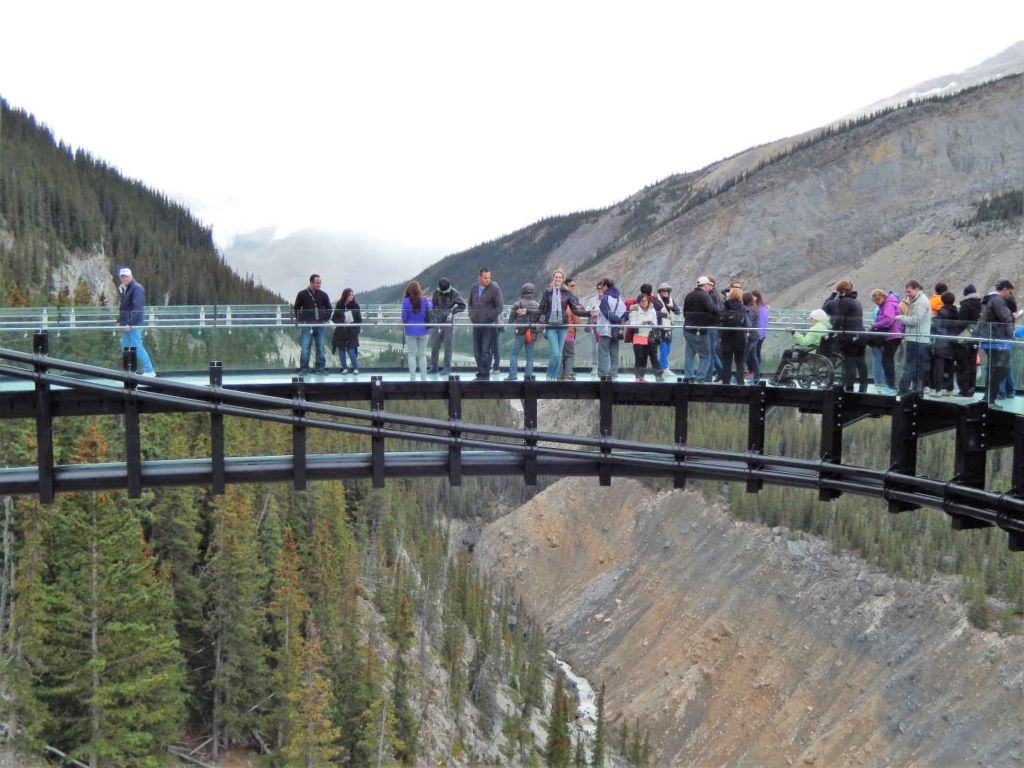
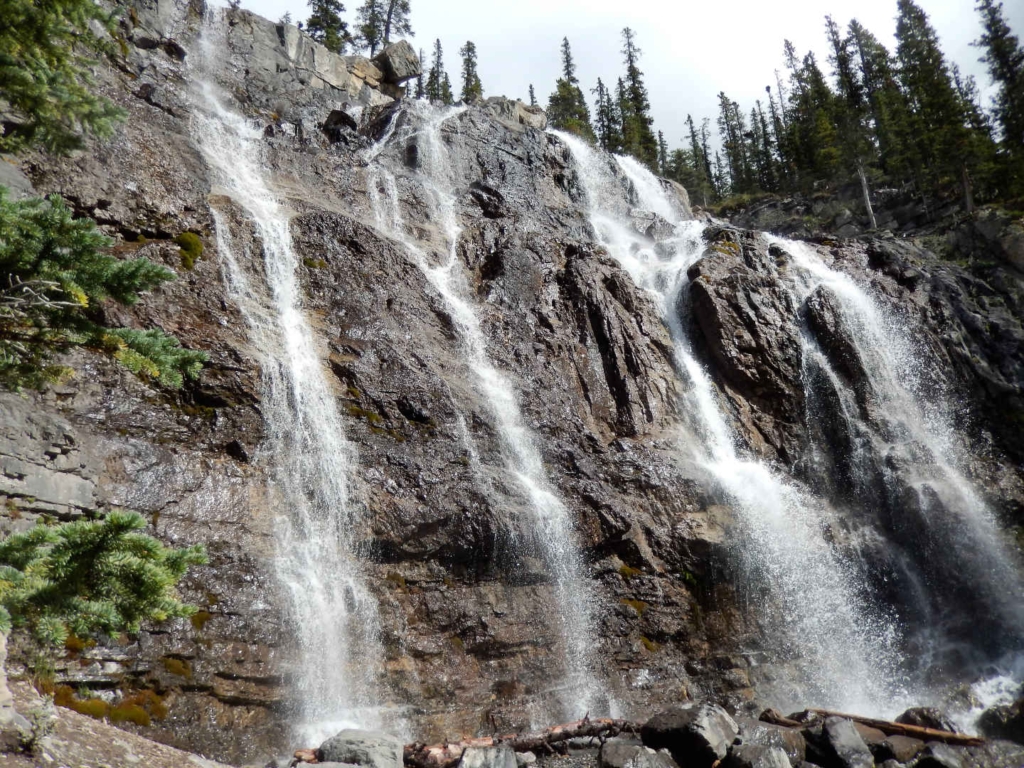
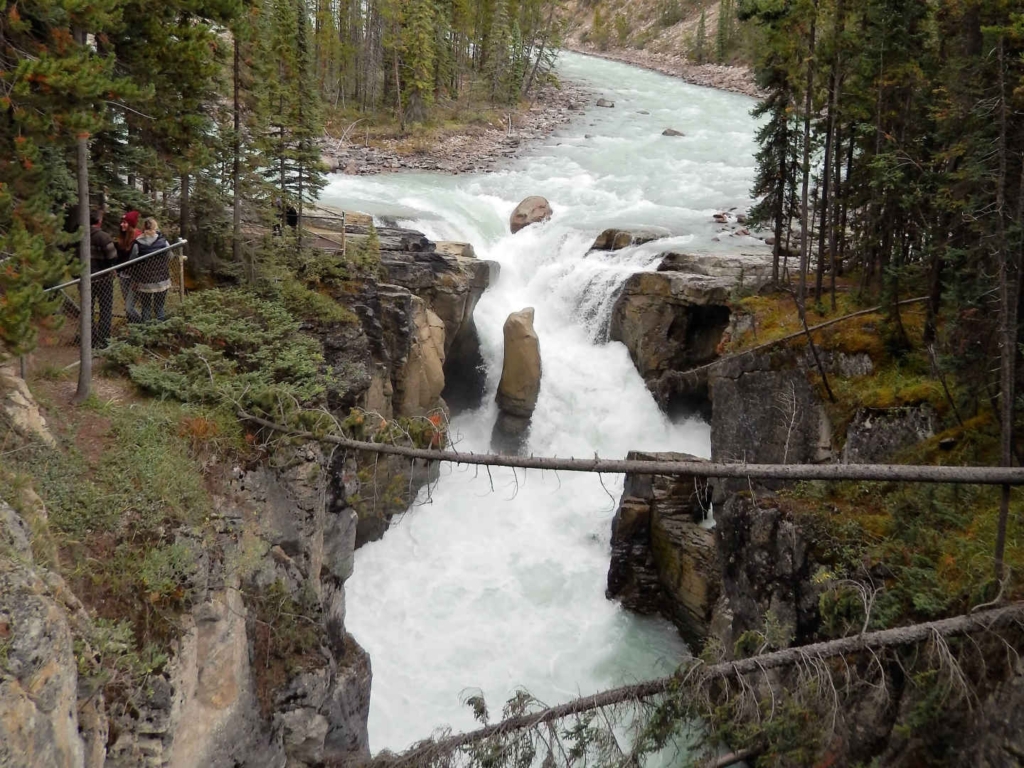
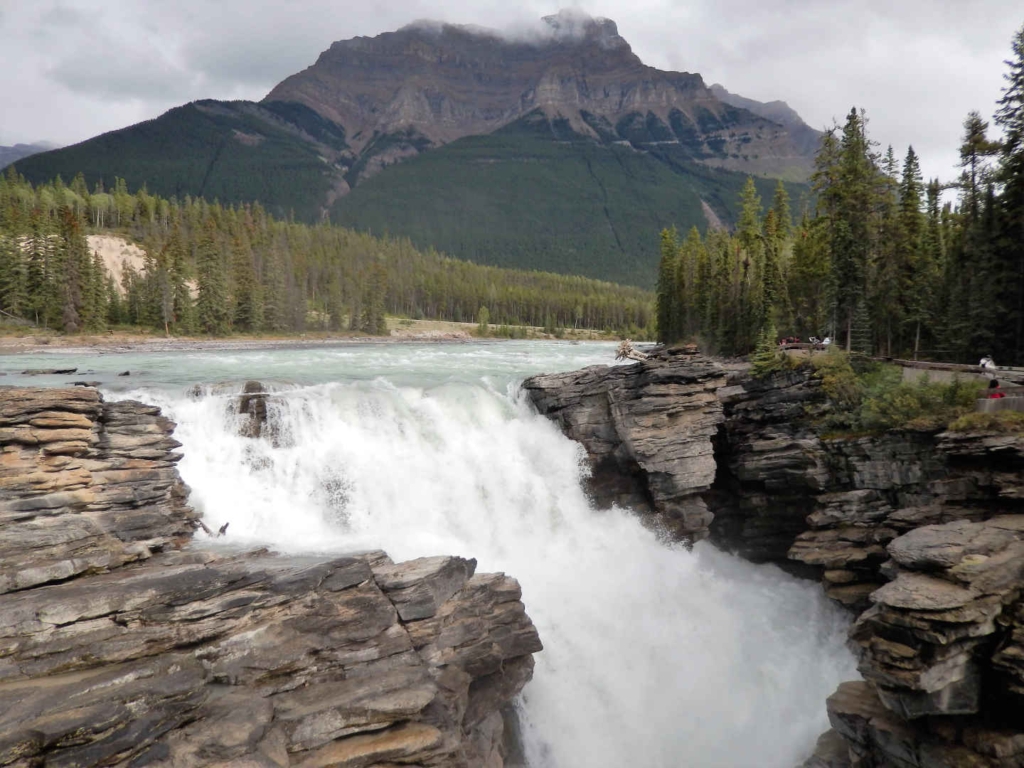
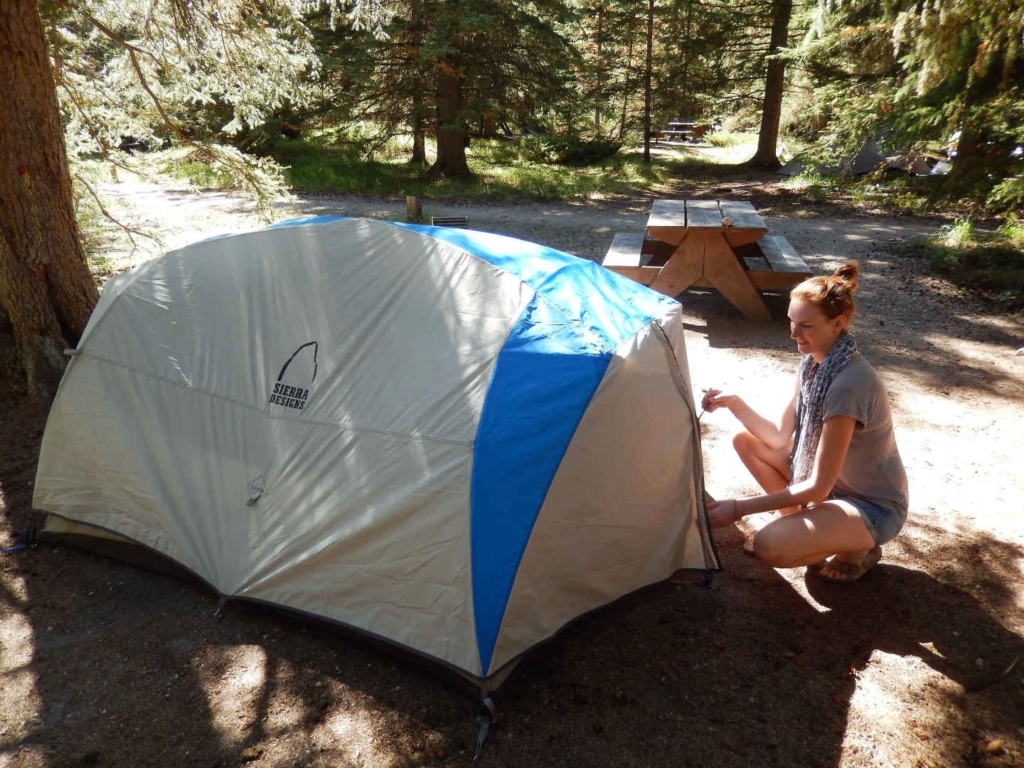
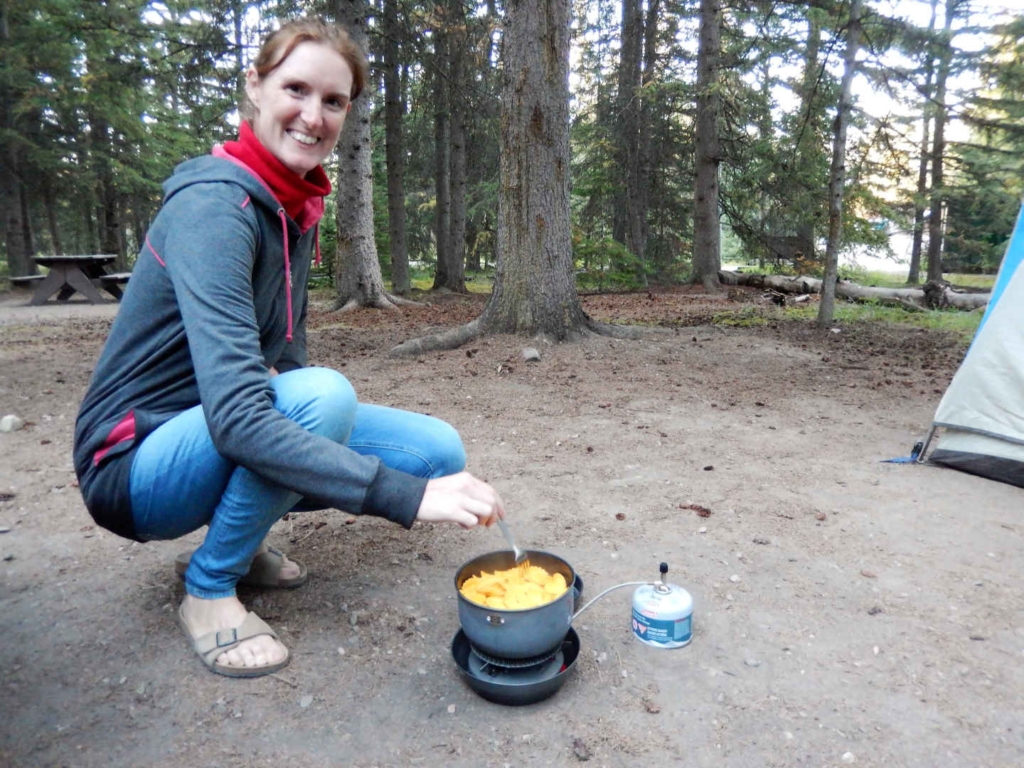
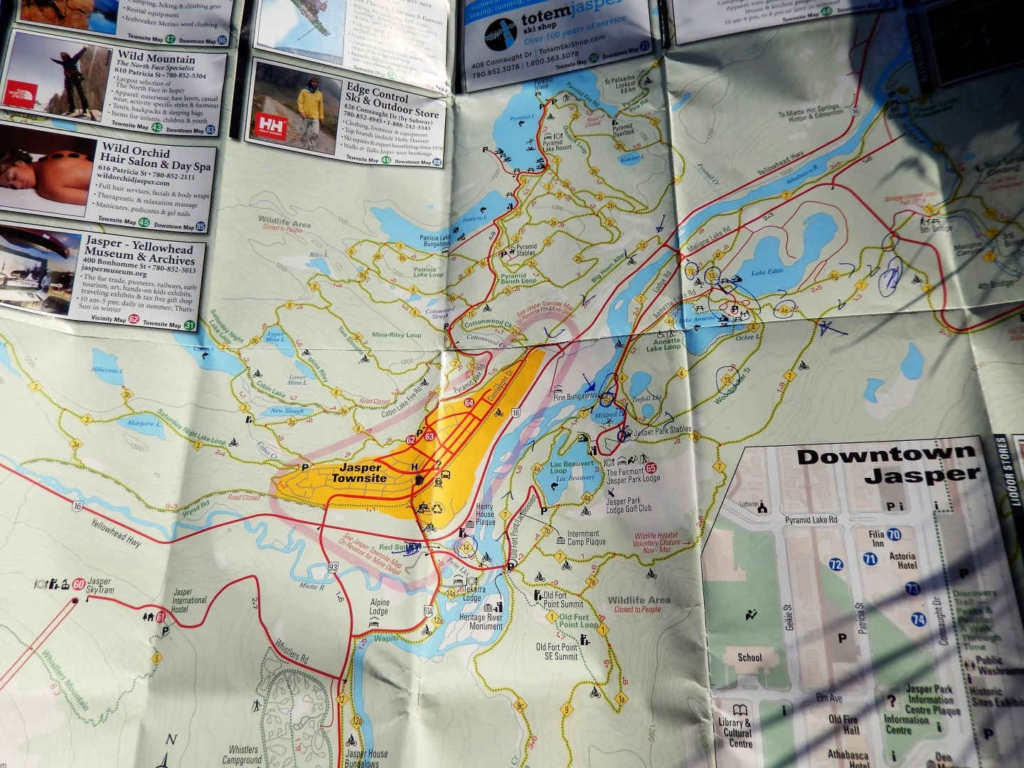
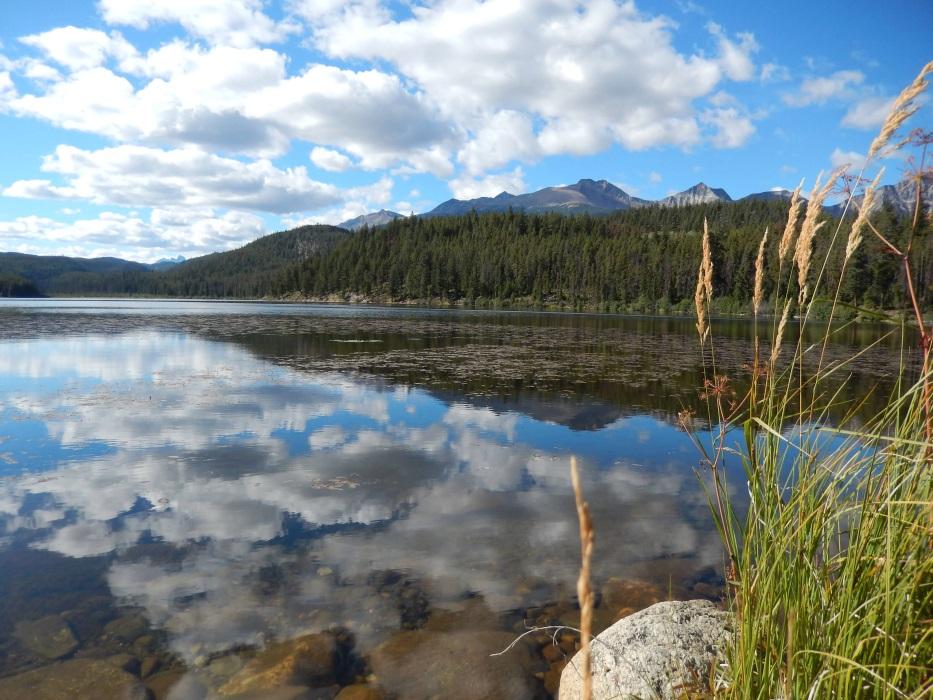
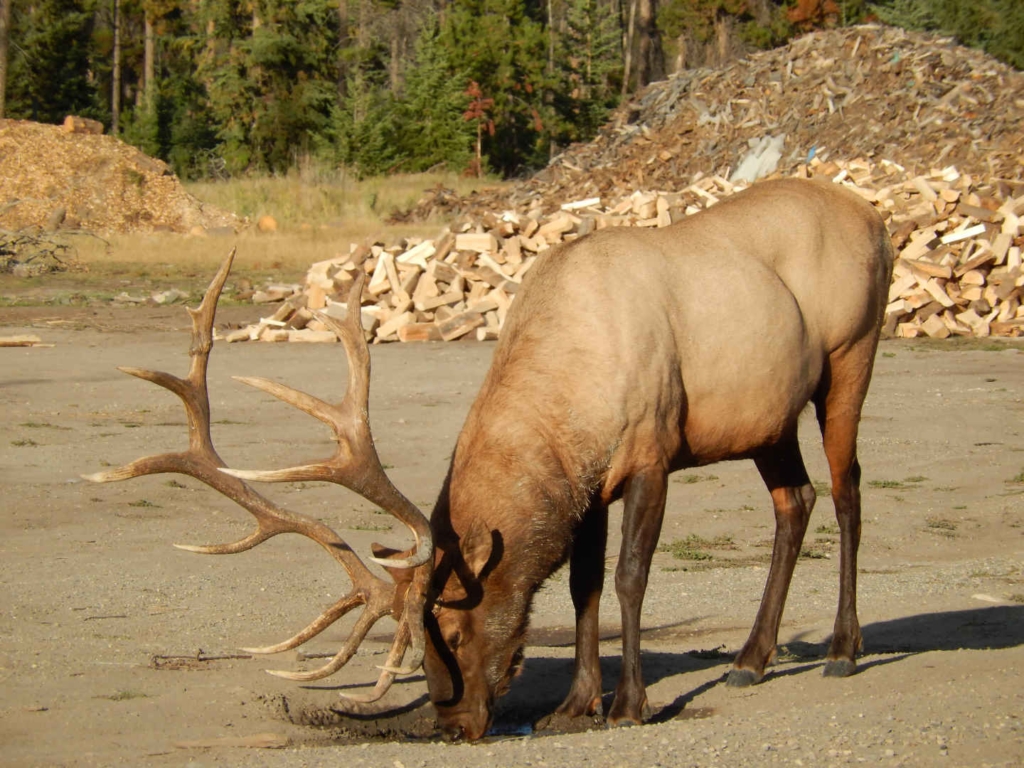
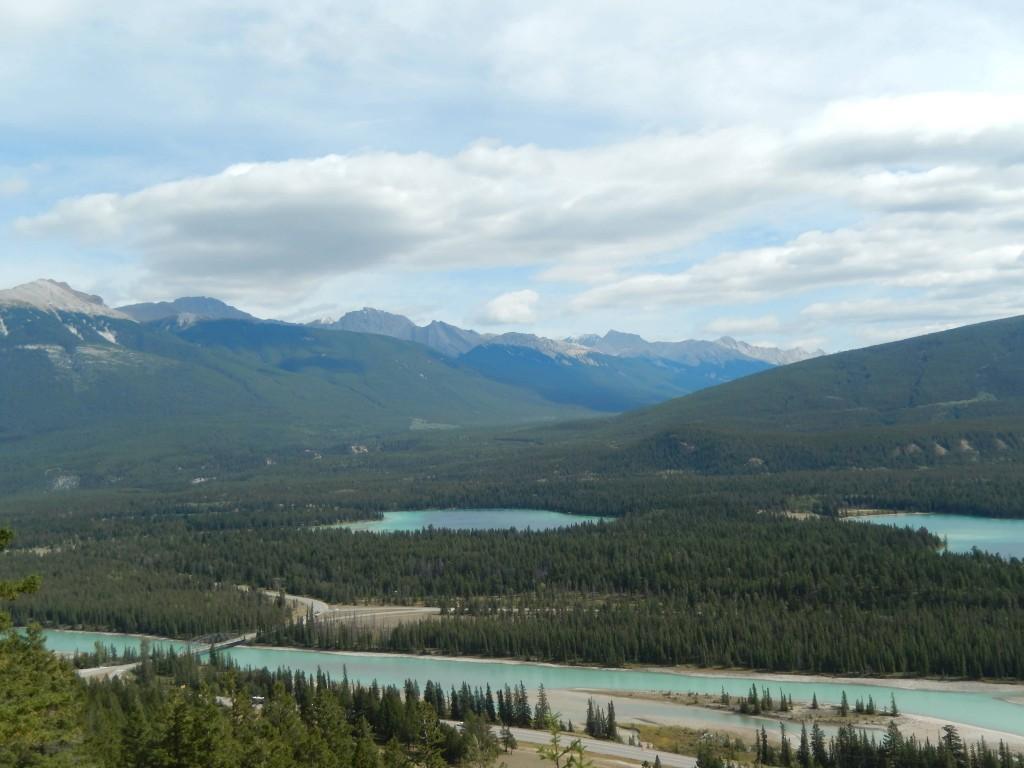
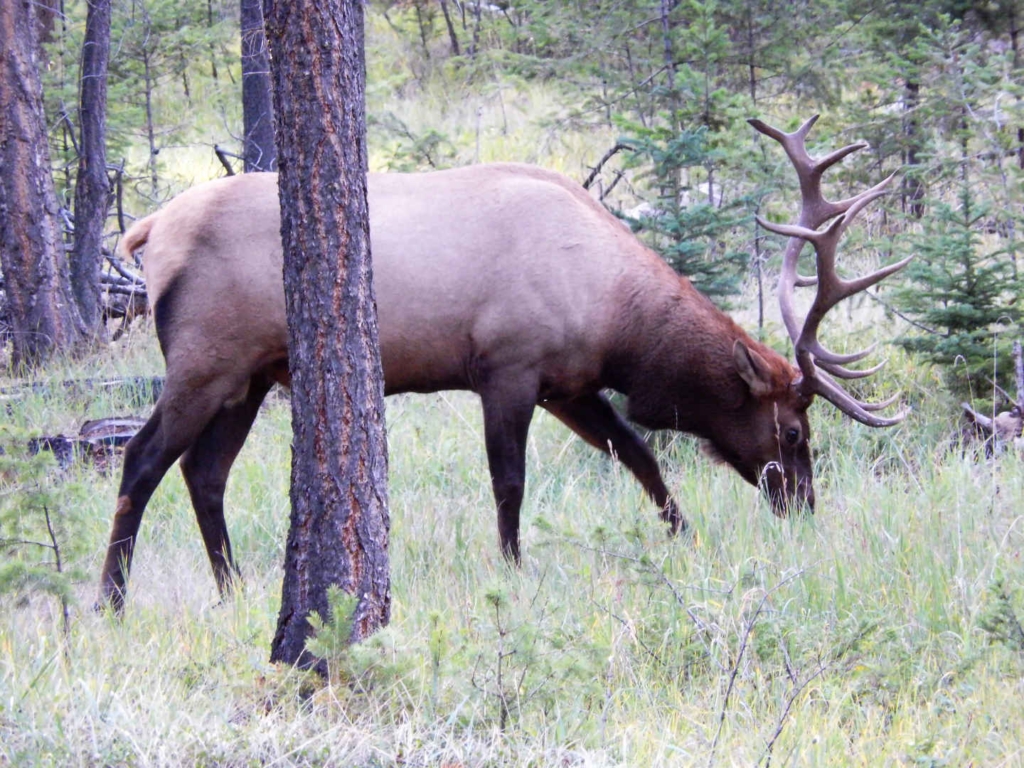
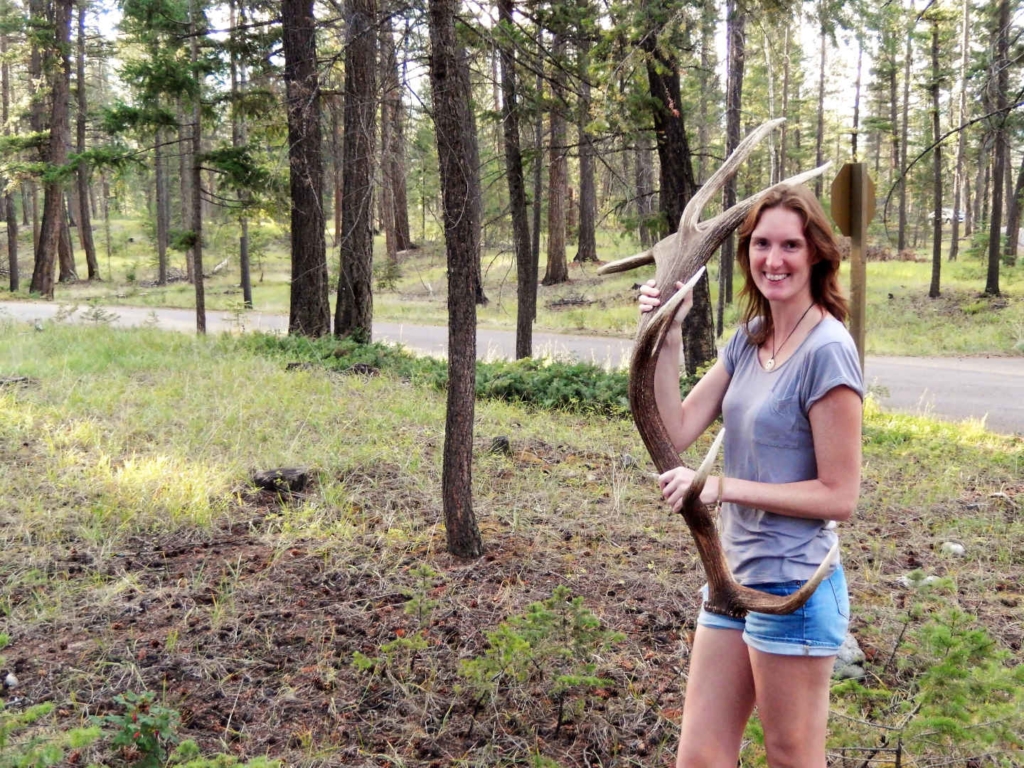
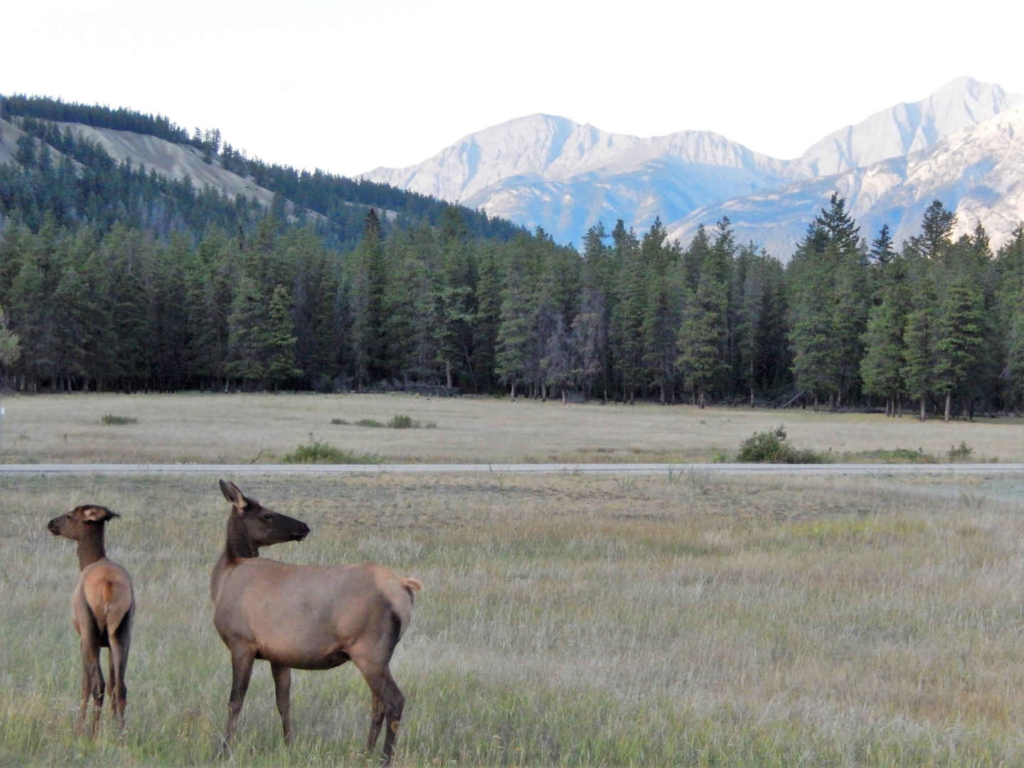
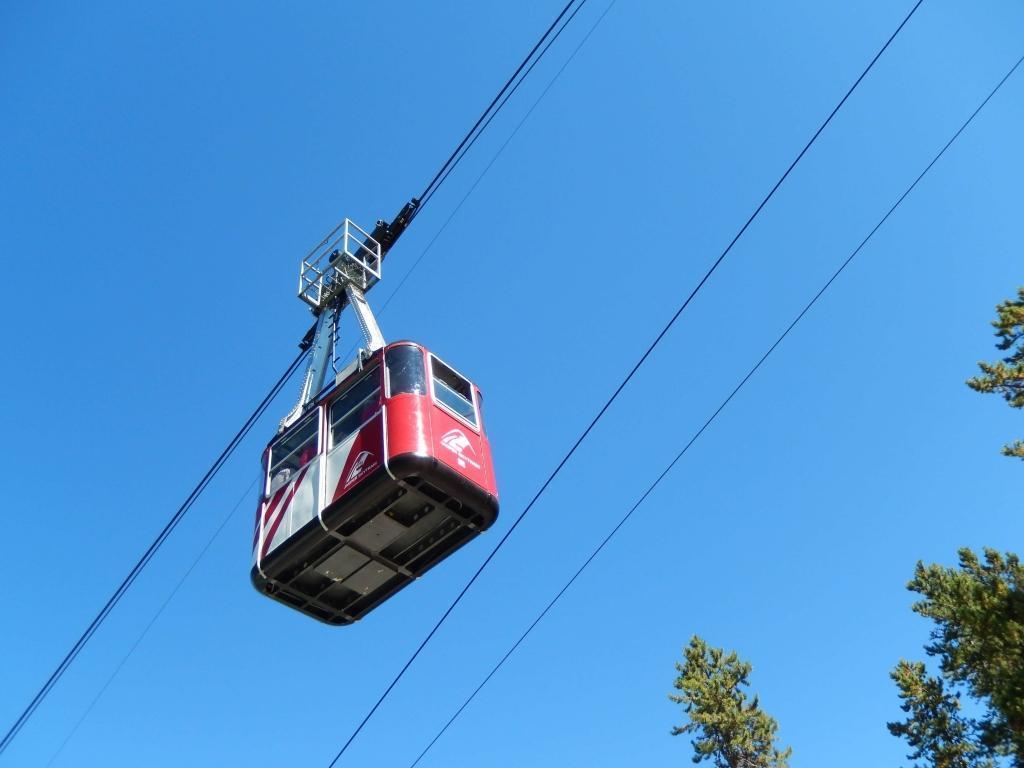
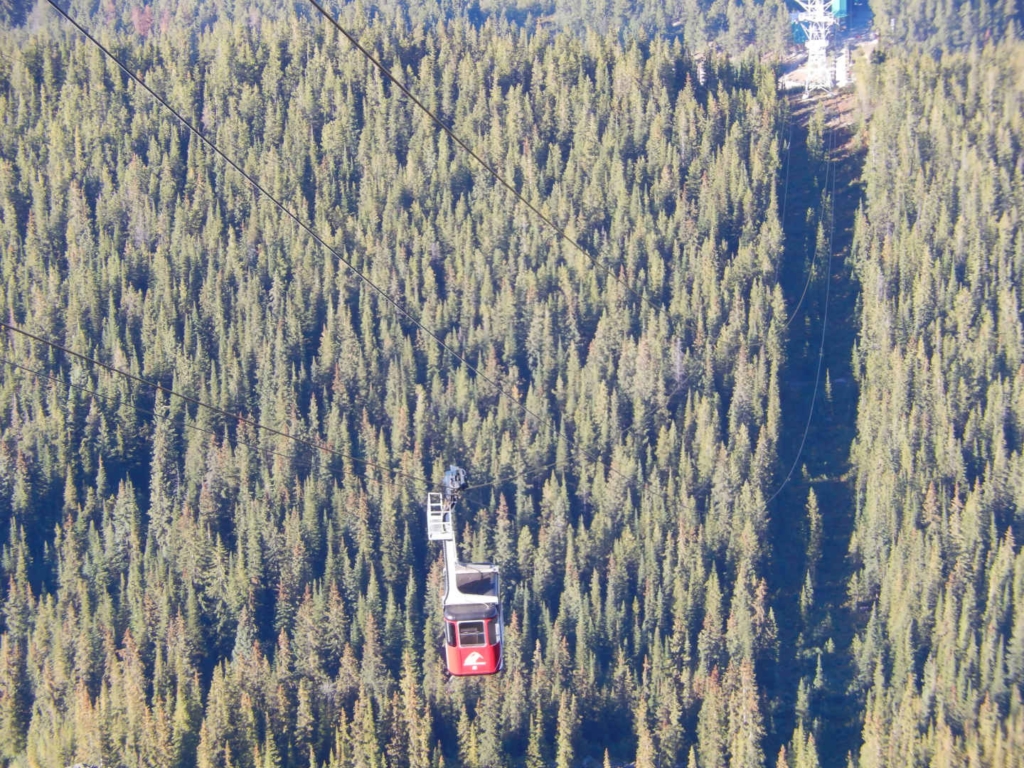
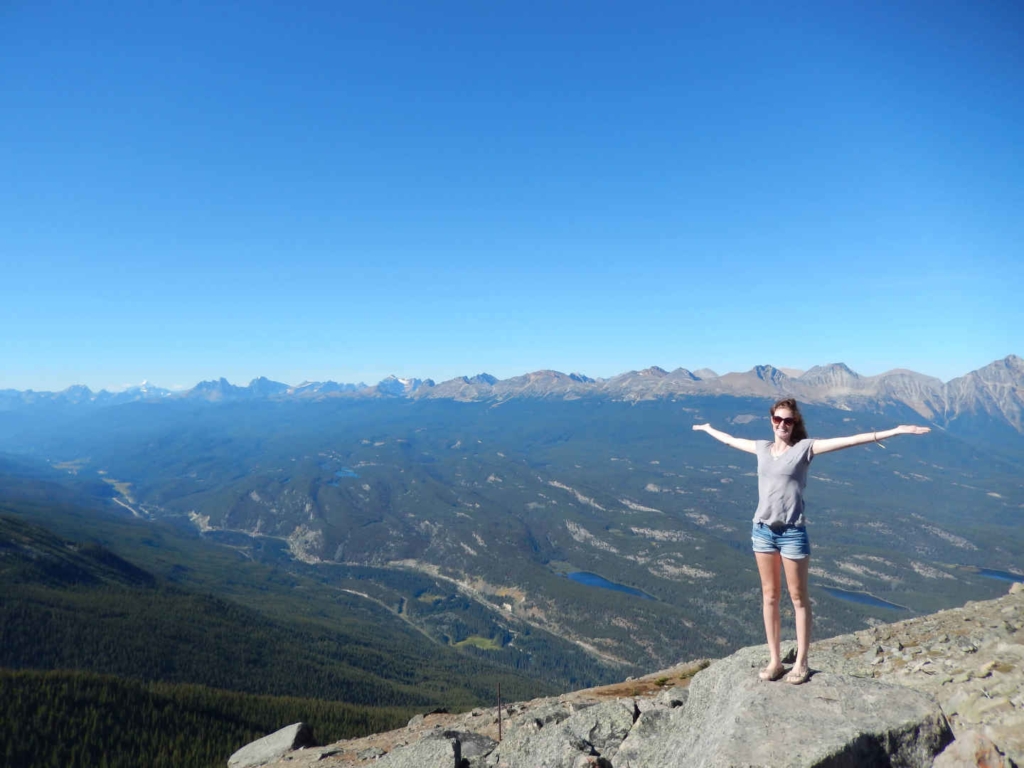
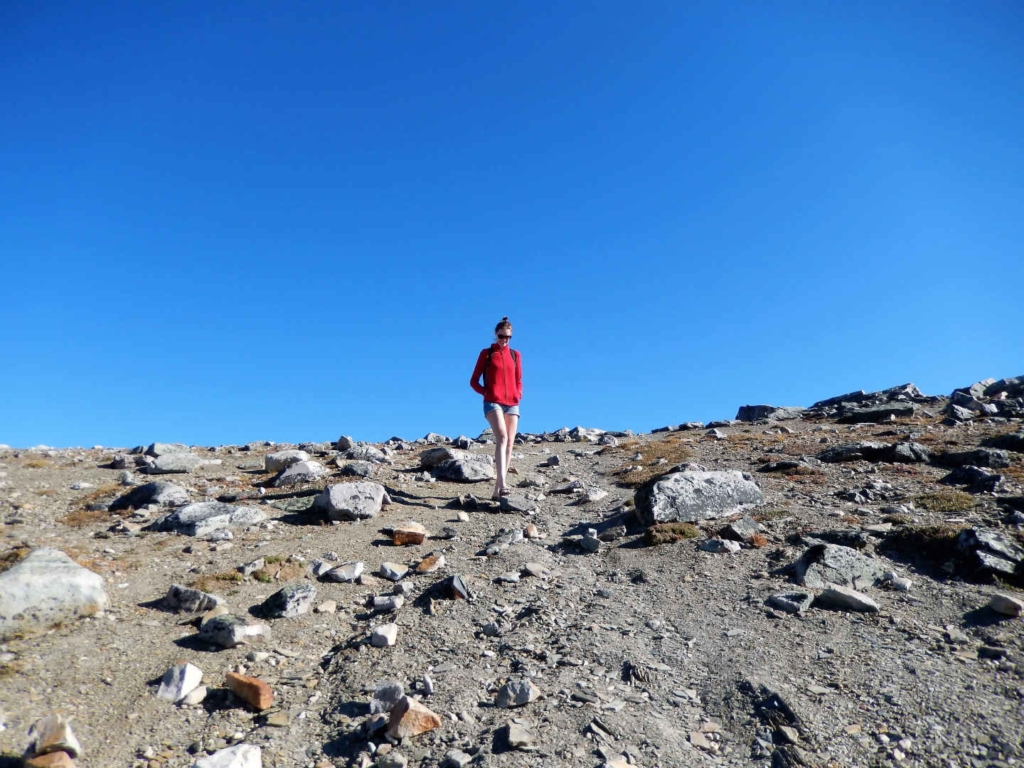
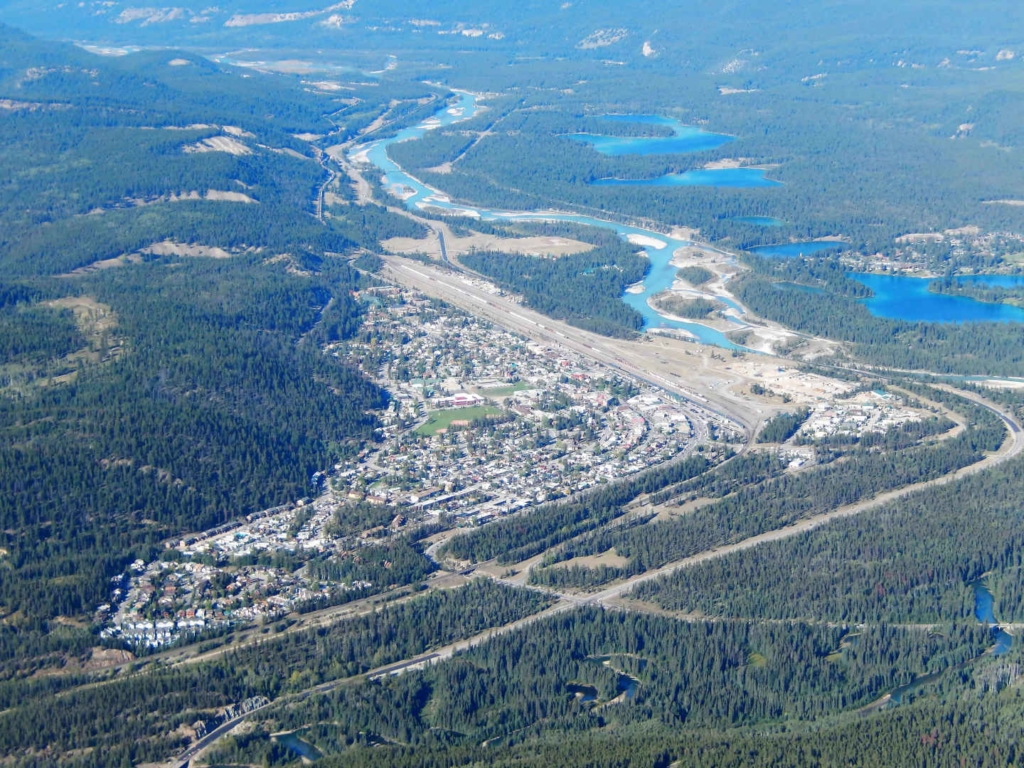

Gorgeous! Makes me want to go, x
Sent by Lady P on the move
>